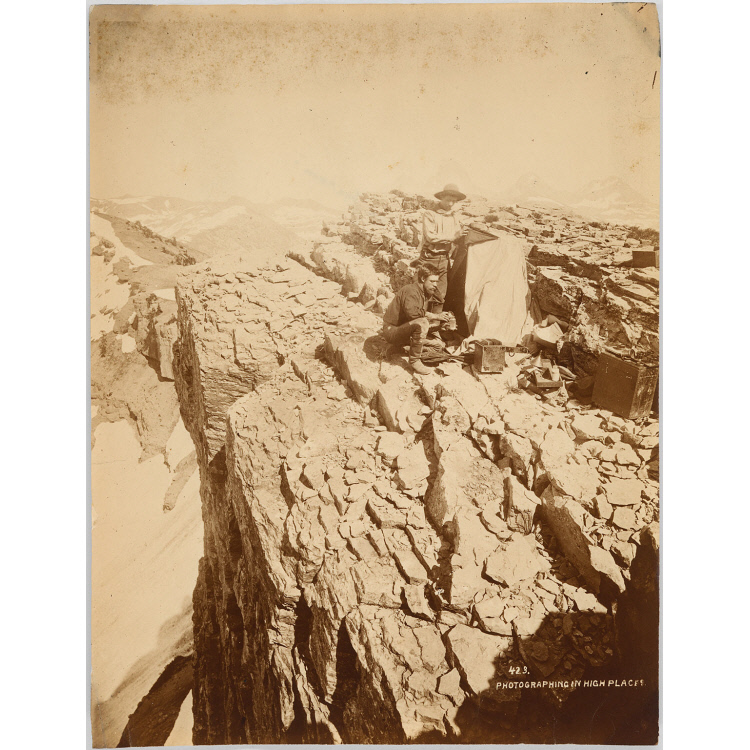William Henry Jackson
Leaving his native New York in 1863, Jackson made his first trip west as a driver for a wagon train. As he had previously earned his living painting theatrical backdrops and political posters and working in a photographic gallery as a retoucher and colorist, it is not surprising that within a year he had opened a photography studio in Omaha, Nebraska. From 1870 to 1878 he was the official photographer for Ferdinand V. Hayden's U.S. Geological and Geographical Survey of the Territories.
Jackson made his first photographs of the Yellowstone area in 1871, returning there many times in subsequent years. These images became extremely popular and also played an important part in convincing Congress to pass the bill in 1872 that established Yellowstone as the first national park. Working with fellow survey artists Sanford R. Gifford and Thomas Moran, Jackson developed a style of photography that was both descriptive and broadly pictorial. In turn, many artists drew upon Jackson's images as source material for their paintings.
In 1879 he opened the Jackson Photographic Company in Denver to promote his pictures of western subjects. Jackson was often commissioned by the railroad companies to take photographs along new or already popular western routes, such as the Gunnison River in western Colorado. Competing with the scenery in many of these images are signs of commercial progress such as telegraph lines and railroad tracks. These published photographs stimulated interest in the region among business people and tourists.
In 1897 Jackson acquired part interest in the Detroit Publishing Company, later called the Detroit Photo Company, which published and distributed his photographs. It is often difficult to determine an exact date or attribution for these works because he employed numerous assistants and sometimes published the work of other photographers.
During the 1880s and 1890s Jackson's chief business was making large-scale panoramas commissioned by railroad companies throughout the United States. In many cases he printed his mammoth-plate negatives on collodion paper, which had a denser weave than albumen coated paper. Collodion not only hid the edge of the abutting negatives but also produced a glossy, non-yellowing image, undoubtedly more suitable for framing. At least two negatives were used to make this panorama of the Hudson River, which documents competing forms of transportation: the railroad and the steamboat.
Merry A. Foresta American Photographs: The First Century (Washington, D.C.: National Museum of American Art with the Smithsonian Institution Press, 1996)









